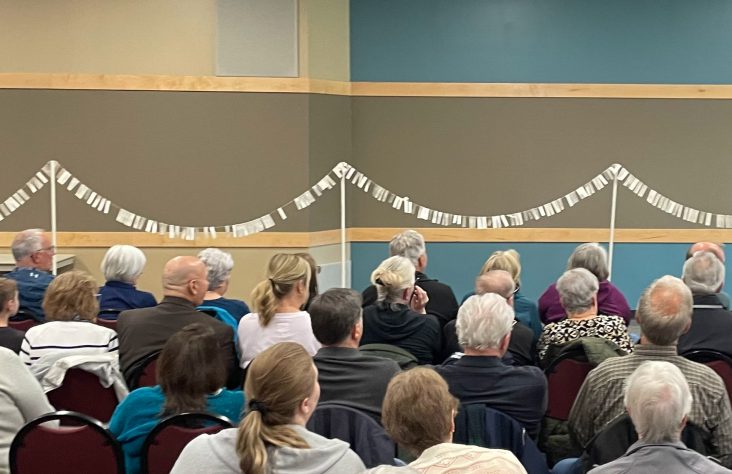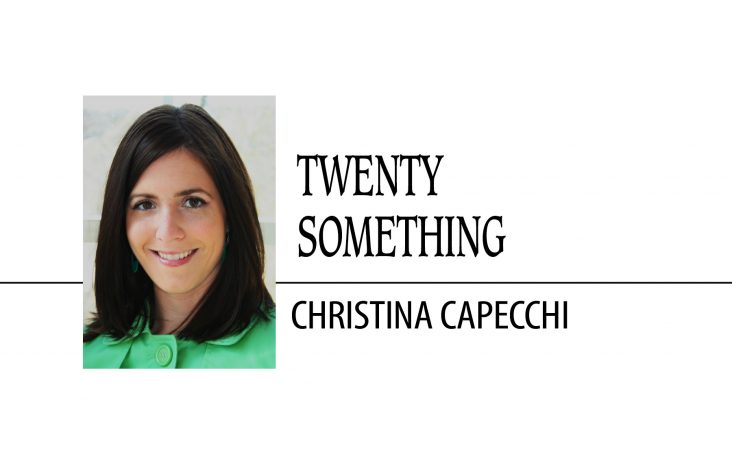August 23, 2023 // Diocese
Students Can Integrate Faith While Combatting Anxiety
It’s the first day of school, and hearts are racing, palms are sweaty, and butterflies develop in the stomach. Known as nervousness or anxiety, it’s the body’s way of dealing with the apprehension that comes with the beginning of a new school year.
“Anxiety is our body’s normal stress response, and it generally involves feeling stressed, activated, and/or worried. However, when symptoms of anxiety are prolonged and significantly impact a person’s life, it can indicate the presence of an anxiety disorder,” said Beth Hlabse, Program Director of the Fiat Program on Faith and Mental Health at the McGrath Institute for Church Life at the University of Notre Dame, where she also serves as Assistant Teaching Professor of Neuroscience and Behavior.
Signs of anxiety
According to Hlabse, there are several types of anxiety disorders, including generalized anxiety disorder, panic disorder, and phobia-related disorders, such as social anxiety disorder. Generalized anxiety disorder is the most common and involves persistent worry about nonspecific life events and situations. Anxiety disorders are generally identified based on symptoms. In high school and college students, anxiety symptoms can include:
• Racing heart
• Shortness of breath
• Tightness in the chest
• Gastrointestinal issues, including, but not limited to, nausea and vomiting
• Frequent headaches
• Irritable or easily agitated
• Mood swings
• Low energy
• Constantly moving or being unable to sit still
• Sleeping too little
• Having frequent nightmares
Emotional, behavioral symptoms may include:
• Frequently voicing fears and worries
• Spending increased time alone, or avoiding social events
• Worsening educational performance, including skipping classes
Treatments
When a student tries to combat the effects of anxiety, it’s important to integrate various methods of treatment, Hlabse said.
“With the Fiat Program on Faith and Mental Health, we often talk about how important it is to draw on the resources of both faith and science. As a starting point, it can be important to seek the support of a mental health counselor,” Hlabse said. “In terms of daily life, understanding how anxiety presents can help us to understand the different practices that help to manage it. The nervous system plays an important role in our experience of anxiety because it is through the nervous system that we first register life experiences as stressful or threatening.”
“With anxiety disorders, the nervous system is chronically activated, including during times when we aren’t facing a clear presenting stressor,” Hlabse said. “Because of the role of the nervous system, it’s helpful to begin with physiological calming techniques and then to address anxiety with more cognitive strategies. By taking deep, intentional breaths and engaging in movement, especially bilateral right-to-left movement (for example, taking a walk), we can help regulate the nervous system. Given the way the nervous system and brain relate, it’s helpful to begin with the body, and then we are better able to utilize cognitive strategies like noticing negative thinking patterns and working to reframe or focus on the positive.”
Feelings of anxiety can sometimes lead to isolation for many young adults, said Hlabse, who believes it’s important to avoid withdrawing from social interactions, stay engaged in activities, and spend time with friends.
“Those with anxiety can also be inclined to try to numb the feelings of anxiety through scrolling on their phone, social media, gaming, binge-watching TV, YouTube, or TikTok,” Hlabse said. “Even though this can feel calming, when we zone out, we’re not able to process our emotions. Try doing something more engaging like going for a walk, engaging your hands in drawing, knitting, gardening, or some other craft. Remember that we can utilize physiological techniques to calm the nervous system, such as breathing and bilateral movement.”
Incorporating faith
Faith is an impactful tool to incorporate into the treatment of anxiety.
“I encourage folks to share their faith with their therapist and to express that they would like faith to be a part of their journey,” Hlabse said. “The secular psychological community often highlights the helpfulness of mindfulness for managing anxiety. But, for Christians, we should consider how mindfulness is related to prayer. Whereas secular mindfulness can promote a focus on self or on vacating the mind, as people of faith, we should remember that we are always in a relationship with a God who loves us. We’re not just individuals, but we’re beings made in the image and likeness of God who is perfect relationship and relationality as Trinity – Father, Son, and Holy Spirit. Hence, when I practice deep breathing, I pray with the Holy Spirit, the breath of life, and I consider how mindful meditation can involve entrusting ourselves to the presence of a loving God who is present with us even when we cannot experience the consolation of His presence.”
Advice for parents
Having a child or grandchild suffering from anxiety is painful for those who struggle seeing a loved one in pain. While parents might feel tempted to simply tell a loved one not to be anxious, Hlabse said it’s important to understand that the nervous system cannot be ordered to stop producing anxious response. She suggested offering gentle support with outreach that could include deep breathing, praying together, or simply going for a walk together.
“Through neuroscience, we’ve learned that our nervous system is always co-regulatory,” Hlabse said. “This means that we are made in such a way that our nervous system is best able to calm down through the secure, stable, caring presence of another person. Before we’re even cognitively aware of it, our nervous system picks up on how stressed or calm another person is through the faculty of neuroception. Hence, as loving friends, mentors, teachers, and parents, we can cultivate an awareness of our own level of stress and anxiety and work to manage this such that we can be a co-regulatory presence for others.”
The prayer and meditation app Hallow has resources available to help respond to anxiety and mental health issues. Hlabse suggested two ministries for learning more about mental health: Souls & Hearts Ministry (soulsandhearts.com) and Sanctuary Mental Health Ministries (sanctuarymentalhealth.org/catholics).
Hlabse said parents and guardians should avoid giving advice or telling young adult what to do.
“We also want to avoid being consumed by the emotions of the other. Christ is a powerful example to us of the way of encounter – of receiving and walking with another in the midst of their illness and suffering while holding onto hope for them,” Hlabse said. “St. Elizabeth of the Trinity is also a beautiful inspiration. She would pray, ‘Lord, the one you love is sick.’ When those I love are suffering and struggle to pray or believe, I try to pray this prayer, bringing them to the heart of Christ, and our faith assures us of Christ’s presence in the midst of anxiety and illness.”
The best news. Delivered to your inbox.
Subscribe to our mailing list today.






